We cover all types of engines here at Engine Builder, but we see certain ones more than others (we’re looking at you LS and Cummins). However, the 6.5L GM V8 diesel engine is one of those platforms that we rarely get exposed to just from the sheer fact that nobody runs one in their trucks anymore. Especially for racing or pulling.
GM’s 6.5L (along with the 6.2L) is one of the most hated and criticized engine platforms for diesel enthusiasts and mechanics alike. The indirect injection V8 was produced by Detroit Diesel under the GM umbrella from 1992-2000 and mostly disappeared from the diesel truck world soon after.
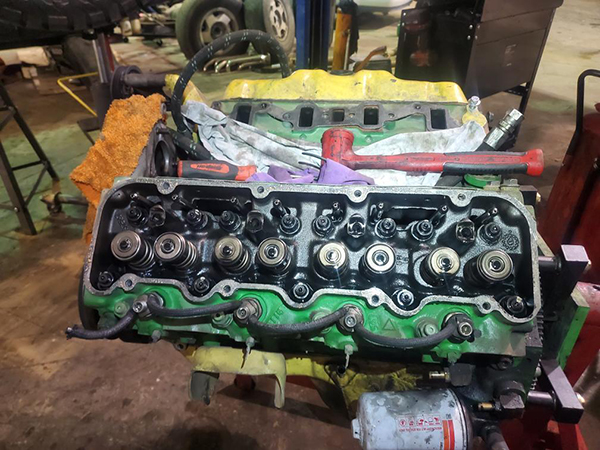
The 6.5L can still be found in certain applications today, such as marine, the H1 Hummer, vans, and school buses, but you won’t find it in many pickups. The engine was heavily outclassed by the 7.3L Powerstroke and the 5.9L Cummins in the early to mid-‘90s in terms of power output. The introductory 6.5L made only 180 hp compared to the 7.3L’s 210 hp and the 5.9L’s 235 hp; the torque produced was also significantly less than the other two. The engines also lagged far behind in production, which is probably why it’s often hard to find any performance parts for the diesel today.
Obviously, for those reasons, you won’t see a lot of guys racing 6.5L trucks at the competitive level. Nonetheless, you’ll always find engine builders who like a challenge. Tyler Loewen is one of them.
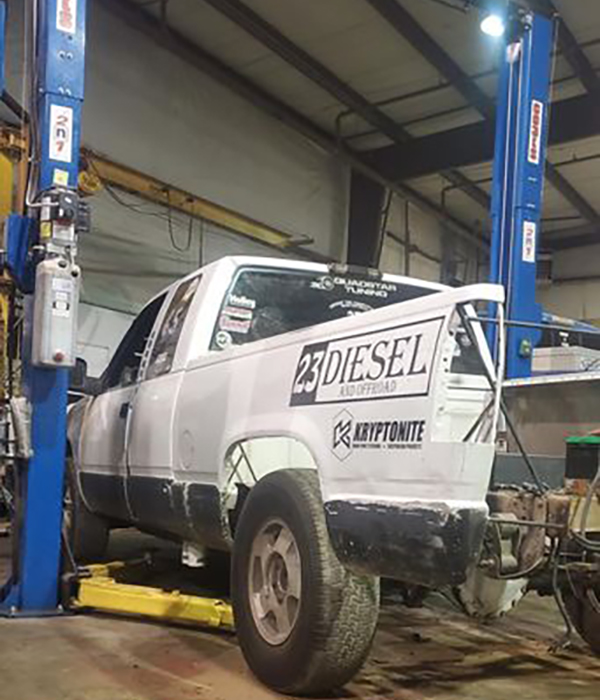
Loewen is the lead technician at 23 Diesel and Off-road, a shop in Grand Junction, CO that does everything from oil changes to full builds. Including his experience at the shop, Loewen has eight years of automotive experience in a few different areas. He says his time at 23 Diesel and Off-Road motivated him to finish his passion project – a 1994 Chevy C/K 1500 with a 6.5L GM engine.
He first got the truck in 2012. Only 15-years-old at the time, he test drove it before he even had his driver’s license.

“Everyone else in town had third-Gen Dodges and 6.0L Powerstrokes, so I had to stick it to ‘em and do something interesting,” Loewen says. “I used to race it stock back in the day, and I have time slips of it when it ran mid-9.10s in the quarter mile.”
Those times have greatly improved since Loewen began seriously upgrading the truck. The first thing he did was turbocharge it and install a water/methanol injection kit.
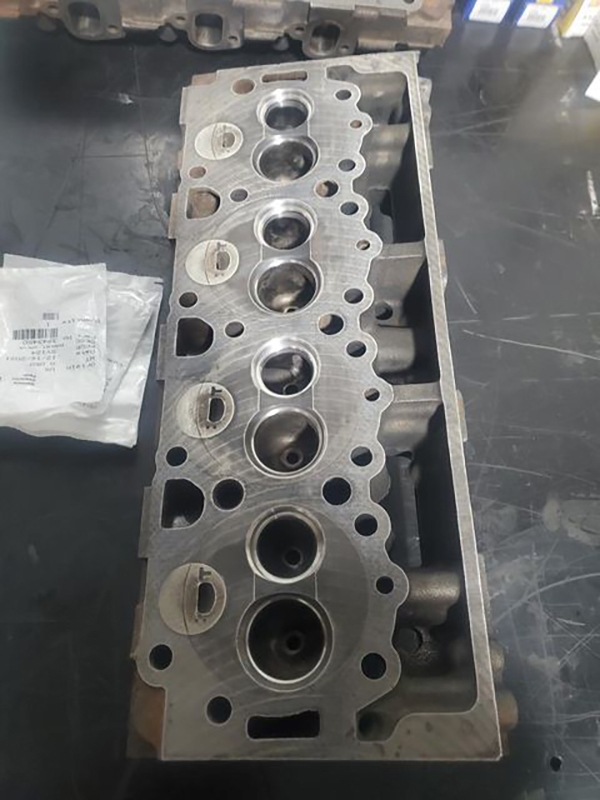
“I had actually put an HE351 on it I took off a third-Gen 5.9L, which was kind of unheard of at the time because no one else was doing stuff like that,” Loewen says. “I lightened the truck up where I could and got it down to the fifteens with a multi-position tuner that had just came out back then.”
Soon after, Loewen ended up cracking the crank on the engine, which would leave his truck parked for the time being. With the engine removed for repairs, he ended up getting “carried away” and turning it into a full-blown race truck.
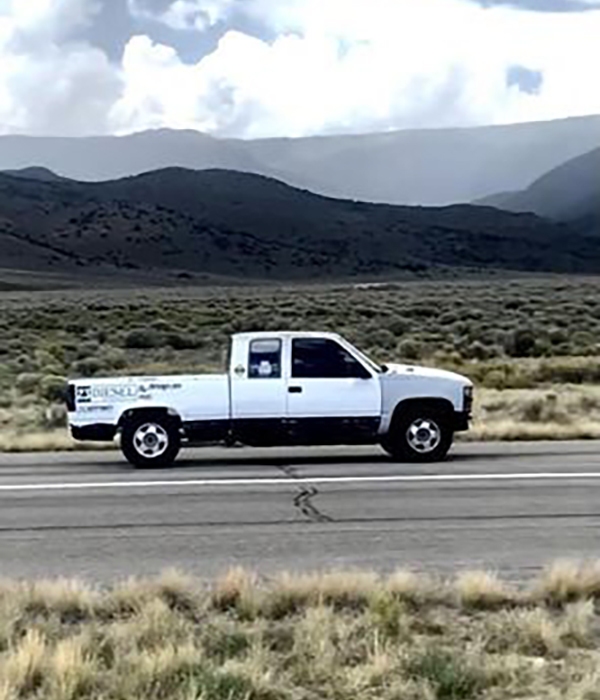
The bottom end of the engine was balanced and consists of a stock block that is bored .040˝ over, a polished OEM crank, cryo-treated stock rods, 21:1 compression Mahle pistons, ARP main studs, and a Fluidampner. Up top, the pushrods and rocker arms in the engine are also stock, and Loewen found a set of conical valve springs from COMP Cams to fit the head.
The engine also features Fel-Pro head gaskets and ARP head studs that Loewen torqued to 120 degrees, rather than the recommended 90 degrees.
“No o-rings or fire rings, just two flat surfaces,” he says. “Everyone said the Fel-Pros were prone to blowing and Mahle head gaskets would be better, but I’ve made 56-lbs. of boost on it. No voodoo with the head gasket or nothing.
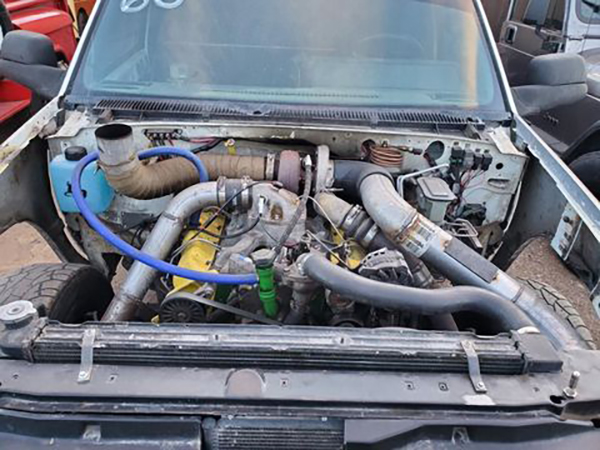
“On the fuel side, I have marine style injectors. They have a little bit higher pop pressure; it’s kind of like the difference between a VCO and a SAC nozzle. The marine injectors have just a bit of a different angle on the needle, so it gets better atomization. They don’t necessarily add horsepower, but they help to make it more efficient.”
The truck came with a stock electrical DS4 injection pump, but Loewen installed a one-off DB4 pump with locked timing to convert the truck to mechanical injection. The four-plunger pump runs at a hefty 20-degrees of timing, which Loewen says is necessary with big mechanical pumps so that you can lock out the dynamic timing to compensate for all the extra fuel.
To help up the ante on his 6.5L diesel, Loewen hand-built and designed the turbo kit on the engine.
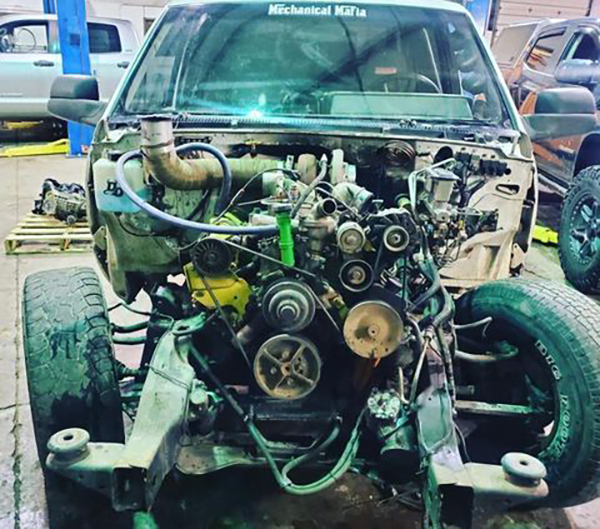
“I used van exhaust manifolds and had my buddy Cole Johnson of Dark Horse Diesel machine V-band flanges into the manifolds,” Loewen says. “Off of that I built 2-inch stainless up-pipes with bellows, everything up to a custom T4 pedestal. Throughout 2021, I ran an S372 SXE turbo, which I think might be the biggest turbo ever put on a 6.5L.”
When Loewen dynoed the engine at ATS Diesel’s On the Mountain 2021 diesel dyno competition, the truck made 493 horsepower and 917 ft.-lbs. of torque on fuel. He would have sprayed nitrous, but a wiring problem the day before prevented him.

This year, Loewen wants to double his horsepower, making a variety of changes to the truck and engine, including an upgraded S475 turbo, an upgraded injection pump, a new drivetrain, and adding slicks.
Loewen’s ultimate goal is to be the first and only 6.5L truck at the Ultimate Callout Challenge. We plan to be there to see if he achieves it!
Diesel of the Week is sponsored by AMSOIL. If you have an engine you’d like to highlight in this series, please email Engine Builder Editor Greg Jones at [email protected]
